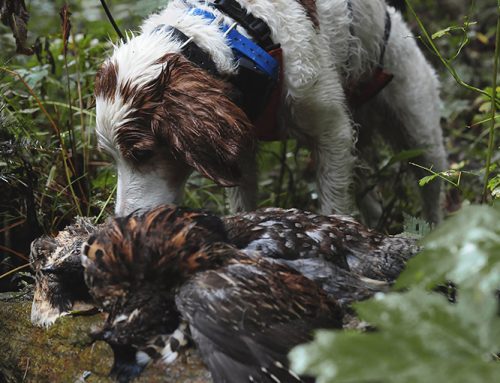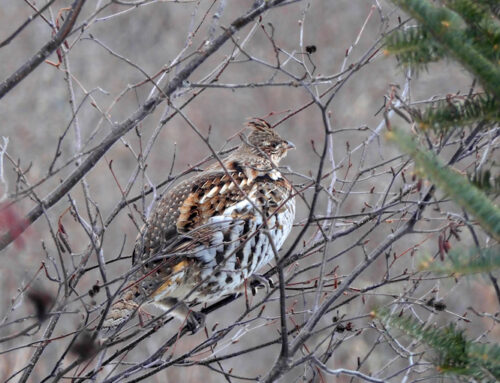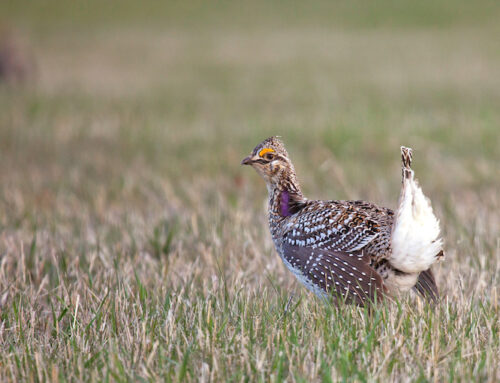Perhaps due to their nocturnal tendencies or maybe their ability to sit motionless, camouflaged against the upland floor while hunters walk within inches of them, woodcock are among the least seen and understood of Ontario’s game birds. Indeed, most hunters’ exposure to them is limited to a few chance encounters while grouse hunting or perhaps bumping one while sneaking into a deer stand in the pre-dawn.
Due to the woodcock’s mysterious ways, people seem to have filled in the blanks of what science doesn’t know about the bird with speculation and folklore. After more than 20 years of hunting woodcock, I’ve concluded neither science nor myth have all the answers. Most successful woodcock hunters have found answers by placing a foot in each camp. By doing this, they’ve managed to lift the woodcock’s veil of mystery and turn those chance encounters into deliberate strategies targeted towards one of Ontario’s finest and most challenging wing-shooting opportunities.
An Odd Bird
Before getting a handle on woodcock and how to hunt them, you must first understand you’re dealing with one of nature’s oddballs. The fact woodcock and woodcock specialists tend to dance to a different drummer is no coincidence. This bird, which has more the appearance of a moth than a bird, seems to revel in its peculiarities. For example, it’s Ontario’s only migratory upland game bird. And, its brain is situated below large eyes, which seem to sit at the top of its head.
The bird’s diet also tends to raise an eyebrow or two. Earthworms are its main source of sustenance. A woodcock’s long beak is not the bony appendage one might think of, either. The tip of the upper mandible moves in a pincher-like manner to grasp worms deep beneath the ground.
While on the topic of eating, also curious is that a woodcock’s own delicious flesh is also odd. Opposite to most other upland game birds, the breast meat is dark and the legs and thighs are white. Add to this the fact it’s technically classified as a shorebird, but rarely spends time on beaches or mud flats, preferring instead new-growth forests and alder thickets.
Flight Birds
One fact about woodcock that science is sure of is they’re migratory, but it’s precisely the birds’ Gypsy-like ways that inspire all kinds of theories and speculation as to when, where, and how long they might stay in one place. Even in Ontario, where woodcock breed and maintain resident populations, woodcock hunters greatly anticipate large flights of migrating birds.
Among those who try to meet the birds on their way south, fairly commonly agreed upon is that weather plays a role in moving flights along. An early winter storm in the north or temperatures cold enough to freeze the ground, thus making it difficult for woodcock to probe with their bills, can morph fairly empty woodlots into crackerjack coverts overnight. Then, in a blink of an eye, birds are gone, leaving the covert to its wintery fate.
The Clues
Figuring out how and where to find woodcock isn’t as mysterious as one might think. In fact, the birds’ physical appearances are big giveaways to consider when trying to find them.
Let’s start with their most striking physical feature, their long, thin bill. We know woodcock use this like a probe to search soft soil for worms. If you’re hunting ground too rocky or otherwise too hard for the birds to pierce with their bills, searching for softer soil greatly improves your chances of locating good woodcock cover.
Before leaving the topic of the bird’s feeding habits, worth mentioning is that a steady diet of earthworms offers its own tips to those observant enough to notice. Worms are made of a high percentage of water and move quickly through a woodcock’s digestive tract. The end result is loonie-sized splats of whitewash, which woodcock hunters call “chalk.” Veteran hunters always keep an eye on the ground, not so much in hopes of seeing birds, but rather looking for their unique calling cards.
The next physical feature of the woodcock most people tend to notice is its large eyes, which are placed high on its head. This is not a cruel joke of nature. In fact, the bird owes its very survival to this slight adjustment. It allows the woodcock an amazing field of vision without moving its head, and thus the ability to see any danger approaching without shifting position and giving itself away – a handy ability for a ground-dwelling bird.
Talking about the woodcock’s ability to see approaching danger might seem a little strange to those who think of it as a bird of impossibly thick, tangled cover. The fact is, while these birds like the protection from predators a thick canopy provides, their survival depends on seeing danger approaching. As an experiment, next time you flush a woodcock, try looking at the cover from the bird’s vantage point. Get down on the ground and look around. You will be surprised just how open the forest is under the canopy of ferns and saplings. Sure, woodcock like thick cover, but not so thick they can’t see or flush quickly to escape danger.
The Canine Connection
Woodcock hunting usually involves gun dogs. I typically use pointing dogs to locate birds, but also enjoy the excitement flushing dogs provide as they root around in the alders.
Regardless of which type of dog you use, or indeed whether you use a dog at all, keep in mind woodcock are notorious for their ability to sit tight. I often marvel at how long a bird will hold tight with a dog on point and a gunner stomping the cover trying to get it aloft. I’ve had woodcock flush from directly underfoot, hitting the sole of my boot as they launched.
Also worth mentioning is some dogs have a curious aversion to picking up and retrieving woodcock. This might be because of the birds’ higher-than-normal body temperature or peculiar diet. Regardless, if you shoot a woodcock, be careful to mark its fall so, even if your dog won’t fetch it, you can still collect your hard-earned prize.
Future Prospects
Hunters are typically aware and proactive with regards to conservation issues, so it comes as no surprise that most woodcock hunters are concerned with habitat conservation and sustainable populations. Ministry of Natural Resources Avian Biologist Patrick Hubert says results from last spring’s woodcock counts in the Great Lakes area indicate the birds are in slight decline.
This said, Hubert is quick to add these short-term trends should be taken with a grain of salt, due to the narrow window in which these counts take place. During these spring surveys, the numbers of displaying male woodcock are counted as they establish breeding territories and attempt to attract mates, thus giving biologists a sense of the given year’s breeding population in a specific area. The severity of the preceding winter and the speed at which snow melt occurs in a particular year might greatly affect how many birds are displaying in any given survey area during counts.
Like most scientists, Hubert is more comfortable relying on long-term trend statistics that take into account more data and tend to provide a better overall view. Interestingly, long-term survey averages show, contrary to last spring’s data, Ontario’s birds have held up well over the last few decades. Hubert adds the province continues to have plenty of excellent woodcock habitat.
Woodcock and woodcock hunting embody everything great about autumn in Ontario: cool and crisp October days, bird dogs searching for scent among nature’s full palette of fall colours, and the camaraderie and companionship of one or two valued hunting buddies. In a world that seems compelled to remove all romance in favour of scientific fact, I continue to be entertained and maybe a little comforted by the fact woodcock and their nomadic ways remain cloaked in a cloud of mystery and backwoods folklore.
Need-to-Know Tidbits
Good woodcock hunting in Ontario starts as soon as the season opens in September. And, while the best hunting conditions typically happen later when leaves start to drop and birds are seen more easily as they flush, most woodcock hunters usually spend at least a few days running their dogs and checking local coverts for early migrants.
Hunters often say grouse and woodcock hunting are one in the same. Not so. If you’re going to hunt woodcock, a small-game licence isn’t enough. Hunters need to purchase a migratory-bird stamp and permit. Possession and bag limits are different from grouse, as well, so read and know the migratory-bird hunting regulations.
Perhaps more directly attributable to the thick cover where hunters encounter woodcock, few birds are shot at any distance past 30 yards. For this reason, open chokes are recommended for these birds. Popular thinking is the more shot there is in the air, in the widest possible pattern, the more birds will end up in your game vest.
Woodcock are small targets, but take surprisingly few lead pellets to bring down. Light loads of No. 7 1⁄2 or 8s do the job nicely. However, not being one to leave things as important as woodcock hunting to chance, I use the highest quality shells available.
In the likely event you flush a woodcock but miss it, mark its direction of escape. Woodcock generally don’t fly far when flushed. A hunter who’s familiar with good woodcock cover and tracks the bird’s flight path can often get a second or even third flush from the same bird.
In Ontario, the best woodcock hunting generally occurs against a backdrop of brilliant fall colours. For this reason, the importance of wearing a blaze-orange vest or jacket and a hat can’t be overstressed. It simply makes hunting safer for you and everyone in your party.







Very good article. could you give any reference where to find them around Ottawa, Renfrel etc, I have being looking for them with no luck.